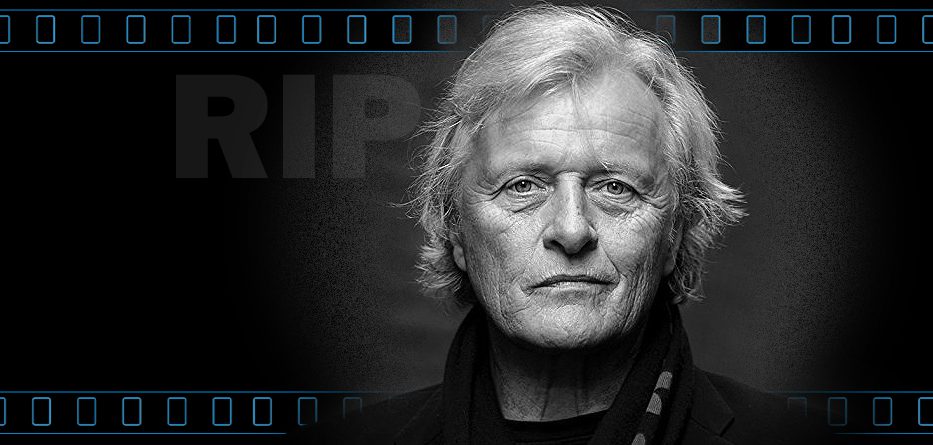“I’ve seen things you people wouldn’t believe. Attack ships on fire off shoulder of Orion. I watched c-beams glitter in the dark near the Tannhäuser Gate. All those moments will be lost in time, like tears in rain. Time to die…”
It was announced today that veteran actor Rutger Hauer has passed away a few days ago at the age of 75, his funeral being held Wednesday 24th July. He died in his native Netherlands after a long, but previously not publicly known, illness.
Hauer was a staple of both experimentally exotic and edgy, often superior, action movies. Mainstream audiences know him from his memorable, iconic roles in the likes of 1982’s Blade Runner (in which he played the replicant Roy Batty alongside Harrison Ford’s titular Deckard) and the noble but tragic Navarre in Ladyhawke, a timeless fairytale of curses and honour, alongside Michelle Pfeiffer and Matthew Broderick.
Born in the dying days of Europe’s WWII, he quickly developed an artistic interest and studied in theatre and dance, joining experimental theatre troupes. After being drafted into the country’s army, he started the first of several major collaborations with fellow Dutch talent, director Peter Verhoeven for the series Floris.
He achieved some international recognition opposite Sylvester Stallone in 1981’s Nighthawks, a year before Ridley Scott’s Blade Runner launched his career to another level. 1983’s The Osterman Weekend, directed by Sam Peckinpah, saw him appear alongside Dennis Hopper and John Hurt in an adaptation of the Robert Ludlum novel. 1985’s Flesh and Blood (with Jennifer Jason-Leigh) was a more adult fantasy compared to the same year’s more all-ages Ladyhawke, with much more explicit nudity and violence (a trademark for which Verhoeven became well known). The Hitcher was a psychological cat-and-mouse horror which aw him star opposite Jennifer Jason-Leigh once again and C. Thomas Howell – and is still a highly-regarded example of the genre. 1988’s Legend of the Holy Drinker and Escape Sobibor both cemented his reputation for more weighty work (and garnered several awards) and 1989’s Blind Fury is a guilty-pleasure martial-arts story of a sightless swordsman that could give any incarnation Daredevil a run for its money. In the early 90s he also appeared as a monster-hunter in Split Second, opposite Kim Catrall and Pete Postlethwaite in a sunken London.
Vampyric tales such as Dario Argento’s Dracula 3D, the original played-for-laughs movie version of Buffy the Vampire Slayer and the role of Barlow in the 2004 version of Salem’s Lot followed and he also appeared in HBO series True Blood. He would often appear in key character parts, essaying key supporting roles in Confessions of a Dangerous Mind (2003), Batman Begins and Sin City (both 2005) and seemed more than happy to take on prolific roles in action thrillers, experimental, low-budget efforts (2011’s Hobo with a Shotgun fits both descriptions) as well as guesting on several cult tv shows.
I had the pleasure of meeting Hauer in the mid-90s (when he was also, famously, the face of the Guinness commercials) and he was a tall, strong physical presence – more softly-spoken and self-deprecating that you might have expected, but still immediately intimidating and one suspects he was quite pleased with a career that gave him the opportunity and skills to shift between a number of diverse roles that varied from iconic to lesser known. Blade Runner was exquisite but Ladyhawke (even with its annoying soundtrack) is a work of art on so many levels and Blind Fury remains a guilty pleasure as well.
A striking and -even as a prolific performer – an under-utilised presence, he will be missed.








